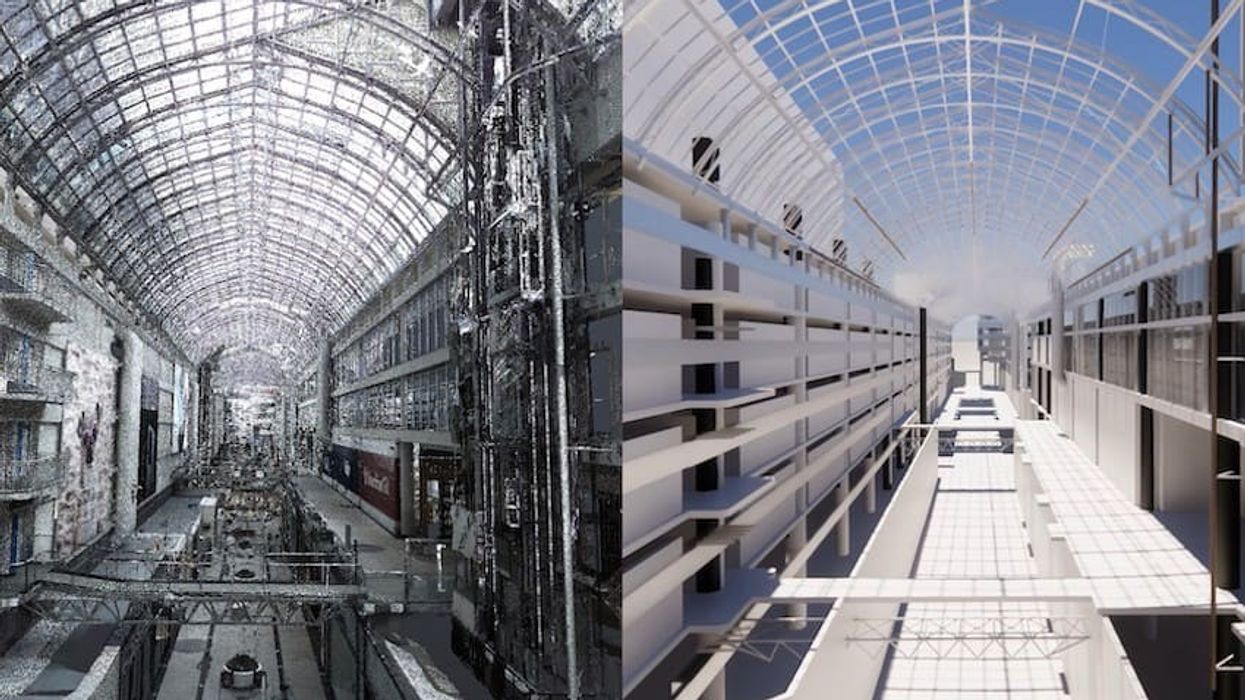The world of construction is always changing. If you’re not thinking about the future, then you’re falling behind.
Under the TransformTO Net Zero Strategy strategy, a mandated shift – the construction of all new buildings with near-zero greenhouse gas emissions by 2030 – means Toronto builders are on a relatively tight deadline for making major changes.
But EllisDon, one of largest legacy construction services firms in the country, is already ahead of this curve. The employee-owned Canadian firm’s portfolio began with an elementary school in 1951, and has since grown to include universities, hospitals, and art galleries in every province. (This is without mentioning major, skyline-defining builds, such as the Rogers Centre in Toronto and the Summit Tower in Vancouver.)
And just as the firm’s projects have evolved, so too have their building processes. One important example: the use of 3D modeling to create environmentally conscious living spaces.
“Digital models do what drawn blueprints only dream of,” says Daniel Meissner, Director of Digital Asset Delivery at EllisDon. “You’re effectively building in the virtual world before you even break ground.”
Meissner’s team leverages reality capture and 3D modeling to create digital representations of the built environment, resulting in buildings that are built efficiently and, in the end, operated more sustainably.
“The initial objective,” he says, “is to complete the project in the virtual world, and within this digital model, store all relevant data that will be required down the line.” The process mitigates risk and schedule complications, and positions the project for better performance once tenants have moved in.
“If you think about 3D modeling, the industry has been talking about it for decades -- building information modeling (BIM) has been a term for 40 years,” says Meissner. “But with such limitless applications, it's taken a bit of time to translate the tech into real-world practicality."
EllisDon has been a trailblazer in this pocket of the industry, helping guide the tech with unique use-cases for decades. The company's in-house teams have produced hundreds of models, from skyscrapers to civil projects spanning tens of kilometers.
READ: Waterfront Development Site Breathes New Life Into the Port Lands
EllisDon Developments’ new Etobicoke project on Fieldway Road, for which the firm is taking on the developer role, is the latest to use 3D modeling.
“BIM is at the core of the design for Fieldway,” Meissner says. “Everything is designed in 3D, then you slice it and dice it to see what you need. We also use these models to plan logistics, show progress over time, and even to operate more safely.”
Post-construction, EllisDon leverages these virtually identical assets and in-building sensors to assist with building operations. Referred to as a project’s “digital twin,” the digital representation of a building is loaded with information, collected real-time from sensors installed throughout. Through this system, a facilities manager would know if something broke, what and where it was, and what they’d need to fix it – immediately.
“Many condos have aging systems that they’re not thinking about year to year. Using systems like the digital twin give operators the tools and live data to manage buildings efficiently over the long-term,” says Jody Becker, Chief Strategy Officer and Executive Vice President, Infrastructure Services & Technology at EllisDon. “That’s the pillar of what EllisDon is trying to do. We’re not in it for a quick fix; we’re here for the long haul.”
“Every existing building will need to achieve net-zero by 2050 or sooner,” she says, “which means that nearly every major piece of building equipment or system is only one lifecycle replacement away from net-zero. For operators to be successful in achieving an economical path to net-zero, they need to start planning today to align lifecycle management with their net-zero goals – any other approach will result in increased costs and uncertainty in achieving those goals.”
Whether a building is a condo, a purpose-built rental, or a living space in between, digital twin models can help them meet these upcoming sustainability targets. For example, in the same way the construction process can be built out before ground is actually broken, these models can compare how a new HVAC system would operate, prior to it being invested in and installed.
“We are only beginning to unlock the power of data in the built environment,” says Becker. “Tools like BIM, and now EllisDon's digital twin, are helping to harness the vast amounts of data that our buildings produce so that we can improve operations, make the buildings more efficient, and produce less carbon. And because we know that you can't be ‘green’ unless you're ‘smart,’ through technology, machine learning, and AI, we are revolutionizing construction and building operations.”
Though digital twins may be costly, EllisDon’s belief is they’re worth the long-term investment in both the smooth functioning of a building, and in the environment.
“We need to lower our carbon emissions,” says Meissner. “Construction is a major culprit. But these models will help us track how we’re getting better [at] meeting sustainability and decarbonization goals."
Keep up with EllisDon on Facebook, Instagram, and LinkedIn.
Cover image: EllisDon
This article was produced in partnership with STOREYS Custom Studio.


















